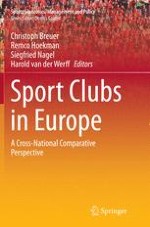2015 | OriginalPaper | Buchkapitel
13. Sport Clubs in Hungary
verfasst von : Szilvia Perényi, Ilona Bodnár
Erschienen in: Sport Clubs in Europe
Aktivieren Sie unsere intelligente Suche, um passende Fachinhalte oder Patente zu finden.
Wählen Sie Textabschnitte aus um mit Künstlicher Intelligenz passenden Patente zu finden. powered by
Markieren Sie Textabschnitte, um KI-gestützt weitere passende Inhalte zu finden. powered by
